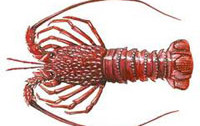
Epinephulus spp.
When people talk about coral reefs, fishermen tend to shrug their shoulders and complain about snagged lines and torn nets. But when you talk about groupers, they suddenly sit up and pay attention. Groupers are among the economicallymost important fishes of the coral reef, because of their popularity as food. Yetwithout the coral reef there would probably be no groupers. For this reason, groupers are an extremely important indicator species and your record of theirexistence or non-existence during your dive tells us a lot.
The Goliath Grouper (Epinephelus itajara), sometimes called the jewfish, is classified as critically endangered on the IUCN Red List. Found in shallow, inshore waters to depths of 45m, this indicator prefers areas of rock, coral, and mud bottoms...
Read More







Social Profiles